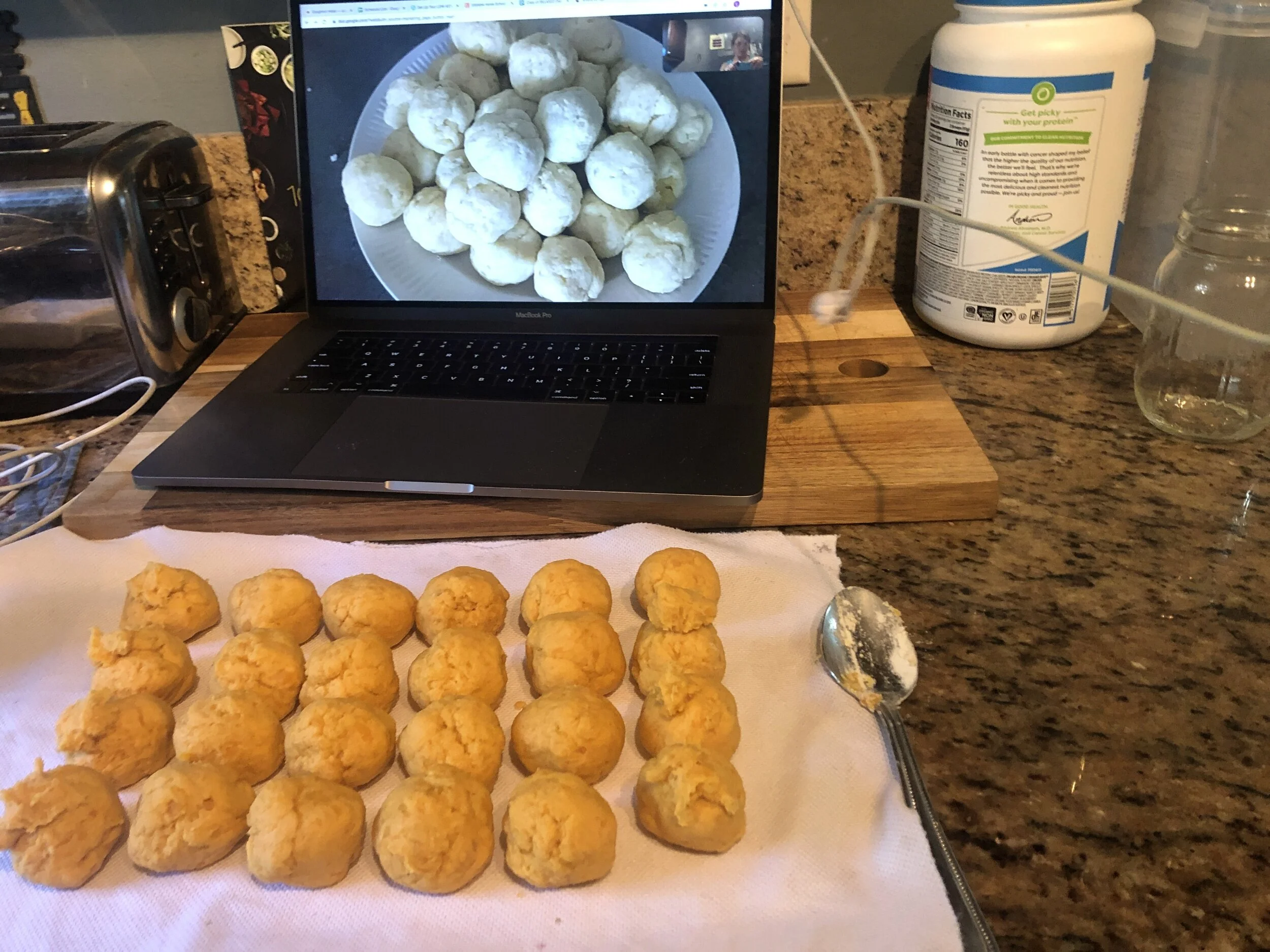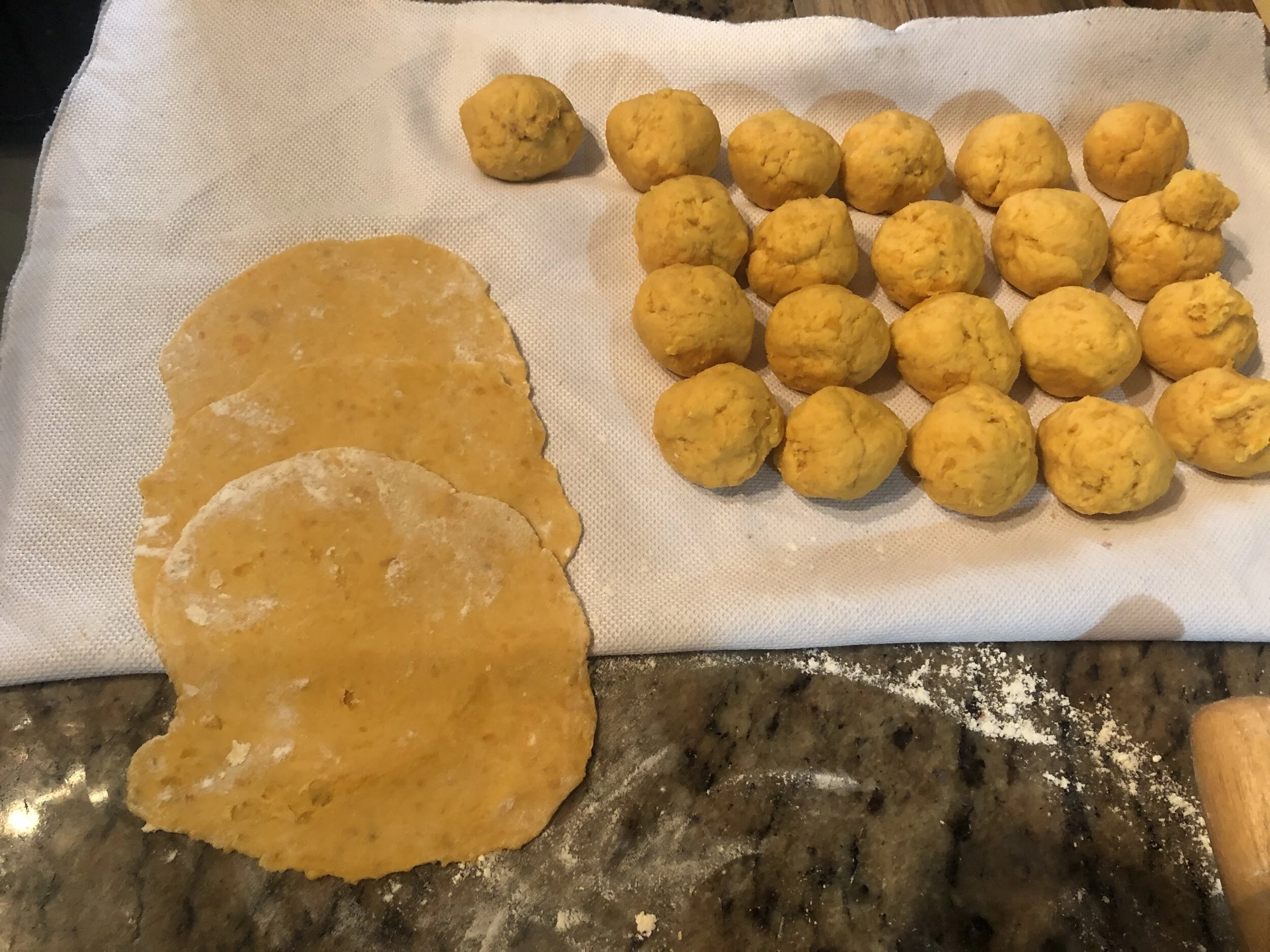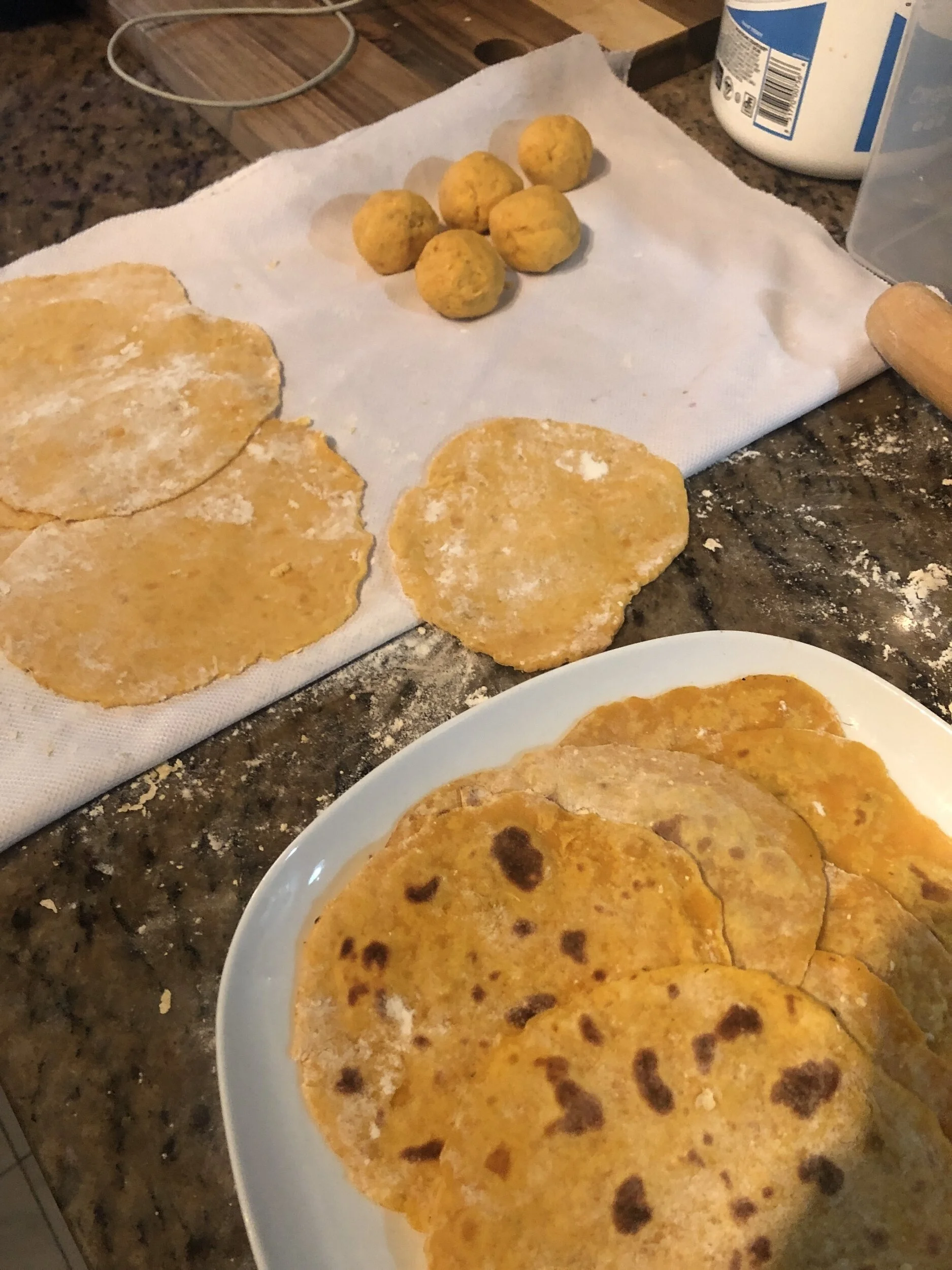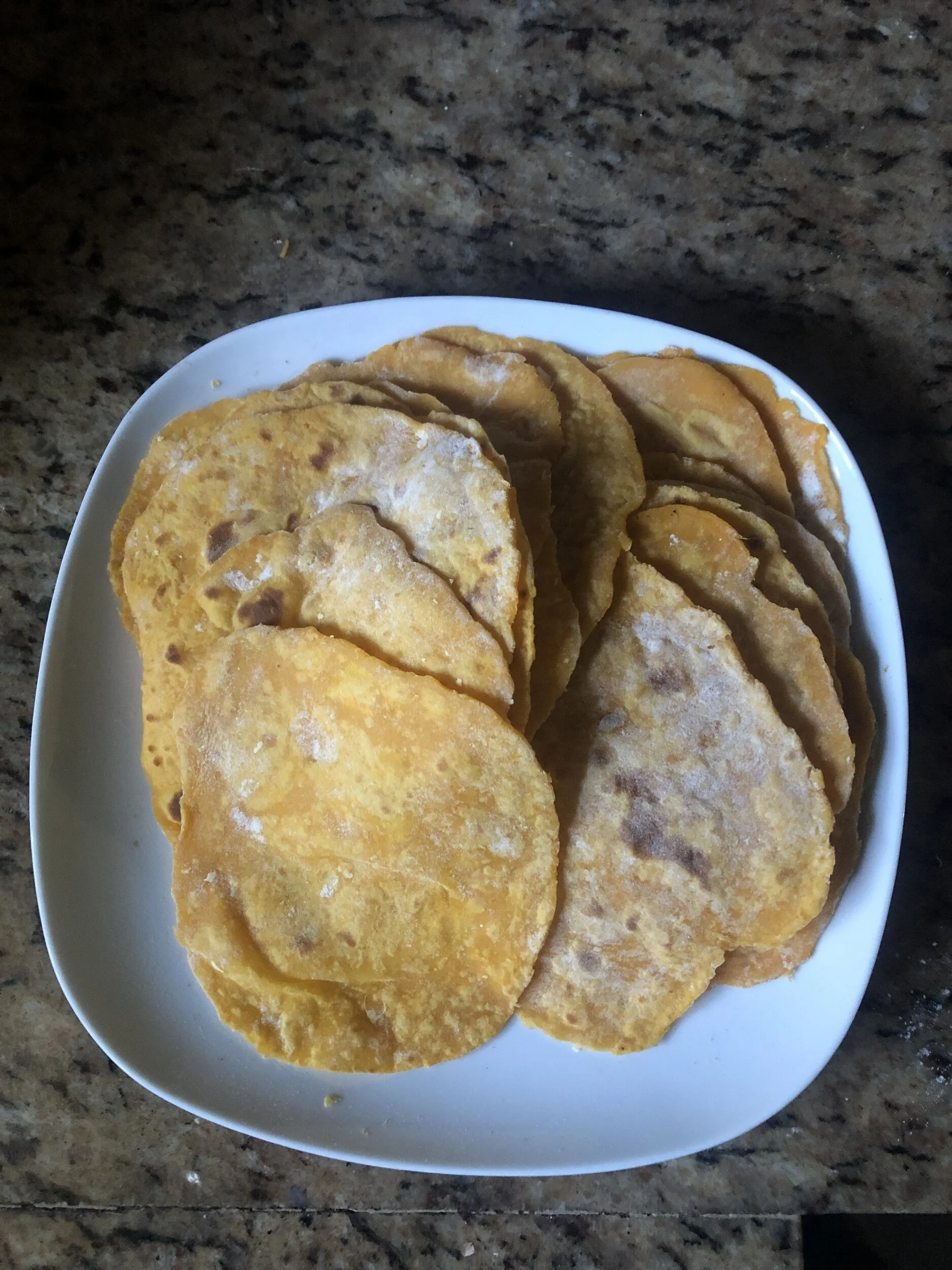Lefse (+ Cranberry Slush)
Okay, yes - this is technically 2 recipes clipped from the Amery Paper in 1983 and if you were looking for a fun cranberry libation you now have one but we were most interested in the recipe for Lefse.
Lefse is a Norweigan flatbread made with potatoes, flour, butter, and milk or cream. Many Scandinavian-Americans make this food around the holidays and in particular around Thanksgiving because it is certainly more fun to make together and pass along the tradition to younger generations.
There are a variety of ways that lefse has been adapted in different regions of Norway - here are a few that I found on Wikipedia:
Tynnlefse (thin lefse) is a variation made in central Norway. Tynnlefse is rolled up with butter, sugar, and cinnamon (or with butter and brown sugar).
Tjukklefse or tykklefse is thicker and often served with coffee as a cake.
Potetlefse (potato lefse) is similar to and used as tynnlefse, but made with potatoes.
Lompe or potetkake being the "smaller-cousin" of the potato lefse, is often used in place of a hot-dog bun and can be used to roll up sausages. This is also known as pølse med lompe in Norway.
Møsbrømlefse is a variation common to Salten district in Nordland in North Norway. Møsbrømmen consists of half water and half the cheese smooth with flour or corn flour to a half thick sauce that greased the cooled lefse. Lefse is ready when møsbrømmen is warm and the butter is melted.
Nordlandslefse is a chunky small lefse. Made of butter, syrup, sugar, eggs, and flour. Originally created in western Norway as a treat to fishermen who were on the Lofoten Fishery.
Anislefse is made on the coast of Hordaland. It resembles thin lefse but is slightly thicker, and it is stained by large amounts of whole aniseed.








